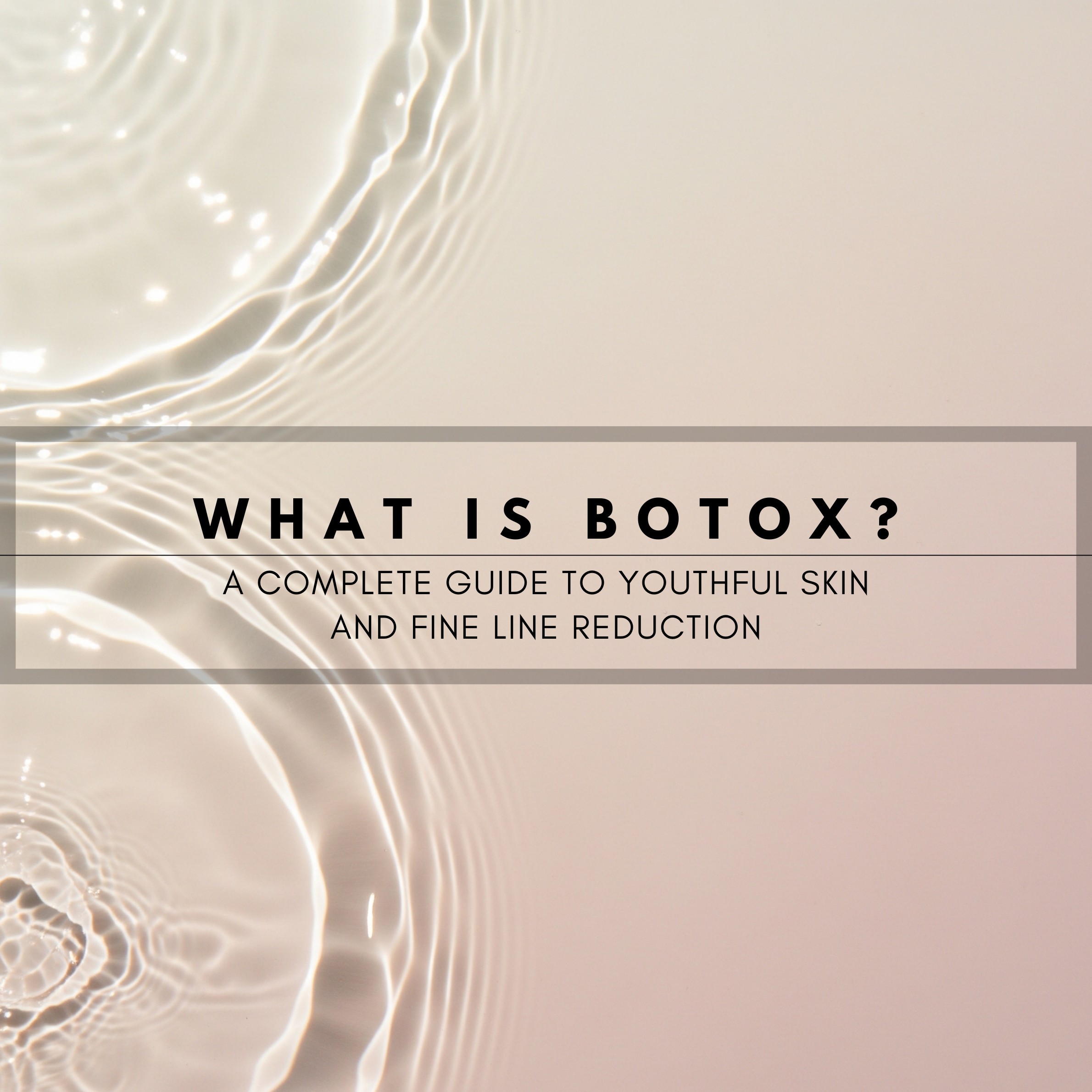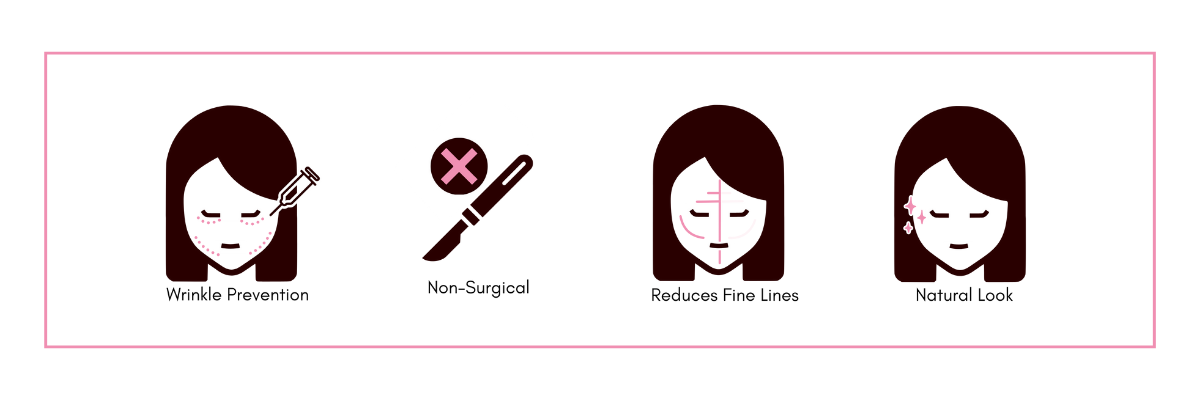
What is Botox? A Complete Guide to Youthful Skin and Fine Line Reduction
Our skin naturally changes over time, and with those changes, many people begin searching for ways to maintain a refreshed, confident look. Among the many treatments available today, Botox is one of the most well-known and trusted options. But what exactly is Botox, and why has it become such a common choice for both cosmetic and medical care?
This article provides a clear and honest overview, allowing you to determine whether it may be right for you.
What is Botox?
Botox, short for Botulinum toxin, is one of the most recognized cosmetic treatments worldwide. In aesthetics, it is administered in very small, safe doses to relax targeted facial muscles temporarily. This makes it particularly effective for treating muscle wrinkles, which are lines that develop from repeated expressions such as frowning, smiling, or squinting.
When the muscles are gently relaxed, the skin above them softens, creating a smoother, refreshed, and more youthful appearance. Beyond aesthetics, Botox is also widely used in medicine to help manage chronic migraines, muscle stiffness, and excessive sweating.
In aesthetics, Botox is best known for improving:
- Frown lines (between the brows)
- Forehead lines
- Crow’s feet around the eyes
- Wrinkles around the mouth and chin
Expert Insight
“Botox injections interfere with and inhibit muscle movement on the skin surface. Fine wrinkles may be improved, and skin may become smoother.”
— Dr. Dong-Hyeon Yoon, Director of Edit Plastic Surgery Clinic

Benefits of Botox
- Reduction of fine lines and wrinkles for a smoother, refreshed look
- Non-surgical procedure with no downtime
- Quick treatment time, often completed in less than 20 minutes
- Customizable results, tailored to your natural expressions
- Preventive benefits, as starting Botox earlier, can help slow the deepening of wrinkles over time
- Additional medical uses, including migraine relief, treatment of hyperhidrosis (excessive sweating), and muscle spasm management
Risks and Side Effects of Botox
Botox is generally safe when performed by trained professionals, but mild side effects can occur. Temporary redness, swelling, or slight bruising at the injection site are the most common and usually fade within a few days. Some patients may also experience minor headaches or tenderness.
Less common risks include temporary eyelid or eyebrow drooping or slight asymmetry as the Botox settles. In rare cases, unnatural results may occur if injections are placed too deeply. Choosing an experienced provider significantly reduces these risks and ensures treatment is both safe and natural-looking.
Is Botox Right for You?
Botox is a versatile treatment that suits individuals seeking subtle, natural-looking enhancements without the need for surgery or downtime. It may be right for you if you are noticing fine lines, wish to prevent deeper wrinkles, and want results that refresh your look while blending with your features.
Since every skin is different, starting with an AI Skin Analysis can help you understand your skin type first and see if Botox is the best fit for your needs.
Ideal Candidates for Botox
- Adults in their late 20s or 30s who want preventive care for early lines
- People in their 40s and 50s seeking to soften established wrinkles
- Individuals with strong facial expressions that create noticeable creases
- Those who want quick, natural improvements before an event or milestone
Who Should Avoid Botox
Botox may not be suitable for:
- Sensitive skin: Try to avoid, but taking a specific dosage is fine
- Individuals with active skin infections or severe acne breakouts at the injection site
- Pregnant or breastfeeding individuals
- Those with active skin infections at the injection site
- Individuals allergic to any ingredients in the product
- People with certain neurological or muscular disorders
Botox for Your LuluTI Skin Type: Who Sees the Best Results
Botox is great for reducing muscle wrinkles and fine lines by the underlying muscles that cause expression lines. It also improves overall skin elasticity and refines pores. So it’s a go-to treatment for those who want to prevent and reduce visible signs of aging.
From LuluTI's perspective, Botox is most beneficial for skin types with a “W” (Wrinkle/loss of firmness) profile. It may also provide secondary benefits for a “T” (Texture/pores) profile, as some patients notice smoother-looking skin as a result of muscle relaxation.
Best Matches: WATP, WASP, WATC, WASC, WUTP, WUSP, WUSC, WUTC
Even if you have an “E” (Elasticity) profile and firm skin, Botox can be a proactive choice to maintain a smooth complexion, prevent deepening of expression lines, and delay future signs of aging.
Important Note: For skin types like EATC or EATP, make sure the injection area is acne-free or wound-free. Injecting into an inflamed area can increase the risk of infection or complications and should be avoided at all costs.
To find out if Botox is right for you, get a Lululab AI Skin Analysis. It will give you a clear understanding of your skin condition and recommend the best treatment for you.
What to Expect After Botox: Timeline and Results
One of Botox’s advantages is that there’s little to no downtime. Most people return to daily activities right away. However, results develop gradually.
▶ Immediately after treatment
You may notice small red bumps or pinpoint marks at the injection sites. These usually fade within a few hours. Some mild swelling or tenderness can also occur.
▶ 3–5 days
The treated muscles begin to relax, and you may start to notice early improvements.
▶ 1–2 weeks
This is when the full effect of Botox becomes visible. Wrinkles appear softer, and the overall look is smoother but still natural.
▶ 3–6 months
Results gradually fade as muscle movement returns. Many people schedule maintenance treatments every 3–4 months to maintain results, while others extend to 5–6 months depending on their skin and goals.
Botox Aftercare: Tips for the Best Results
To maximize your results and minimize side effects, gentle post-treatment care is essential. Here are some simple tips:
Stay upright for at least 4 hours: Prevent the product from moving to unintended areas.
Allow the Botox to settle properly: Avoid rubbing or massaging treated areas for 24 hours
Reduce the risk of swelling or bruising: Skip strenuous exercise, saunas, and hot baths for the first day:
Use sunscreen daily: Protect your skin and maintain long-lasting results.
Stay hydrated and follow a balanced routine: Support overall skin health and recovery.
Botox vs Skin Botox: What’s the Difference?
You may have heard about “Skin Botox” and wondered how it differs from regular Botox. The key difference lies in the injection depth and purpose.
Botox (muscle Botox):
This type of Botox is injected directly into the facial muscles. Its primary purpose is to relax overactive muscles that repeatedly contract when we smile, frown, or squint. By temporarily blocking nerve signals to these muscles, Botox softens dynamic wrinkles such as forehead lines, frown lines (glabellar lines), and crow’s feet. The result is smoother skin and a more rested expression, while still allowing for natural movement when done skillfully.
Skin Botox (micro-Botox)
Unlike muscle Botox, skin Botox is injected very superficially into the dermis, rather than the muscle layer. The goal here is not to stop muscle movement but to improve the skin’s surface. This treatment helps minimize enlarged pores, reduce excess sebum production, refine skin texture, and smooth out fine lines. Because it targets the skin itself, the effect is a fresher, more radiant complexion rather than just wrinkle reduction.
While both use the same ingredient, their techniques and outcomes are slightly different. Some people even combine them for a more comprehensive approach to wrinkle care and improving skin texture.
Next Steps in Your Botox Journey
If you are considering Botox, the best step forward is a consultation with a qualified dermatologist or aesthetic practitioner. During this consultation, your skin, facial expressions, and goals will be assessed to create a treatment plan tailored just for you.
With proper care, Botox can provide a natural, refreshed look that allows you to feel confident and comfortable in your own skin.
Botox FAQs: Everything You Need to Know Before Starting
1. Does Botox hurt?
Most people describe it as a quick pinch. Any discomfort is minimal and temporary.
2. How long does a session take?
Usually 10–20 minutes, depending on the areas being treated.
3. Can I go back to work right after?
Yes. There’s no downtime, and most people return to their daily routine immediately.
4. When will I see results?
Initial effects appear in 3–5 days, with full results in about 2 weeks.
5. Which wrinkles does Botox treat best?
Botox is most effective for expression lines caused by muscle movement, such as frown lines, forehead lines, and crow’s feet.

